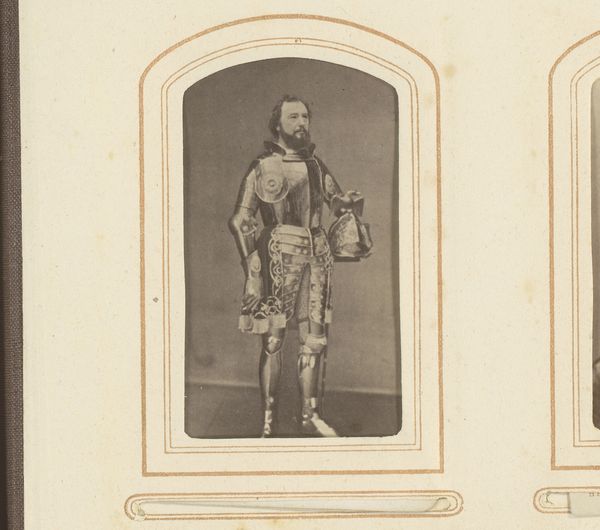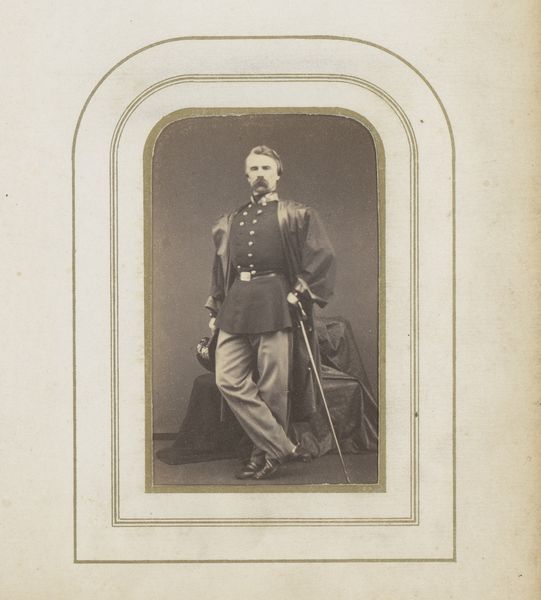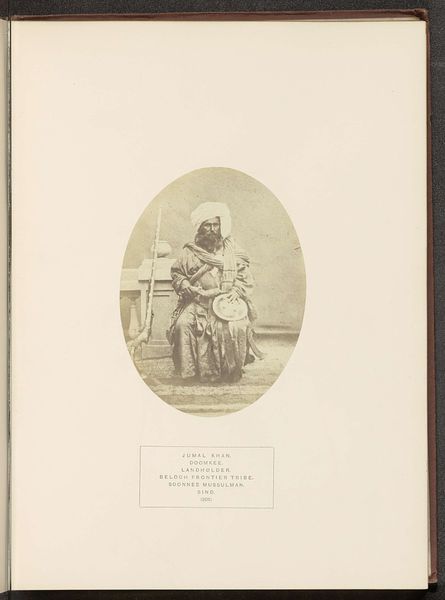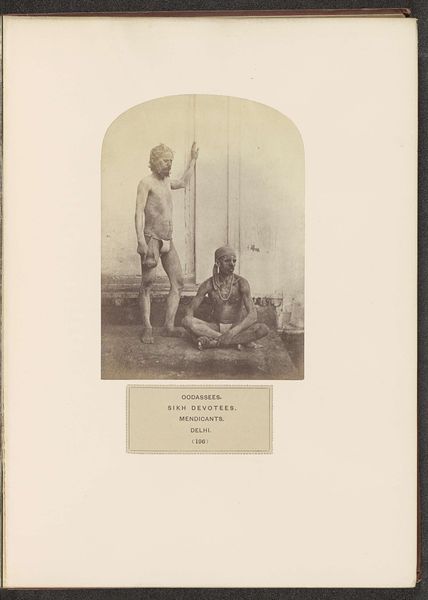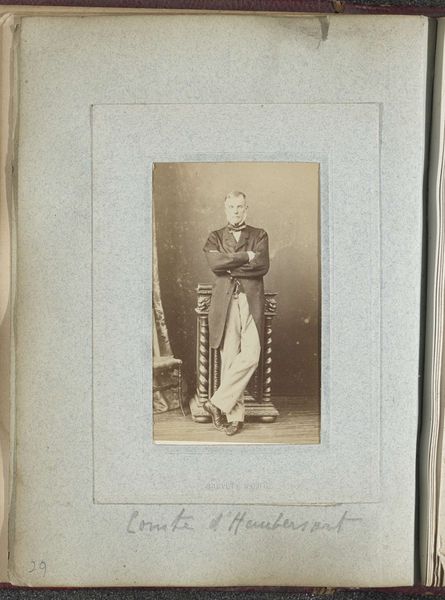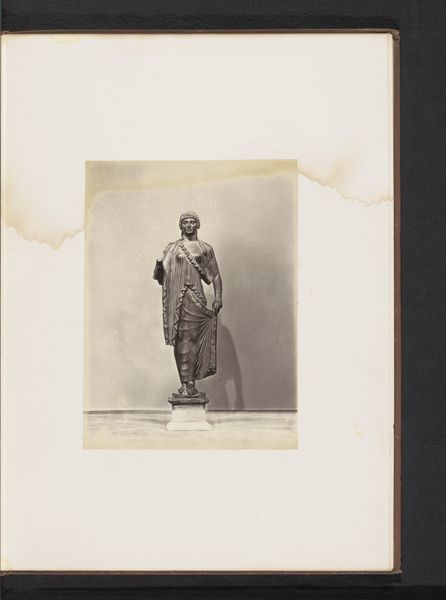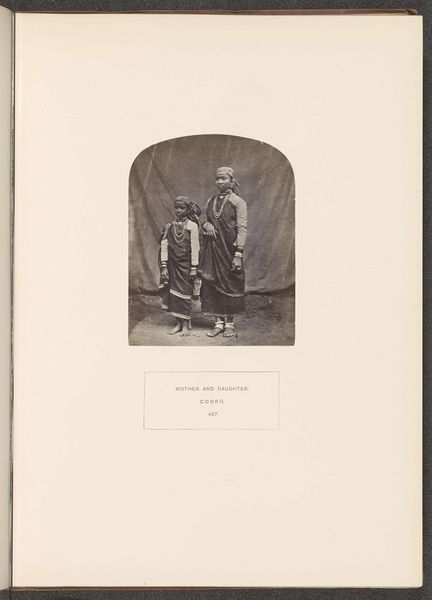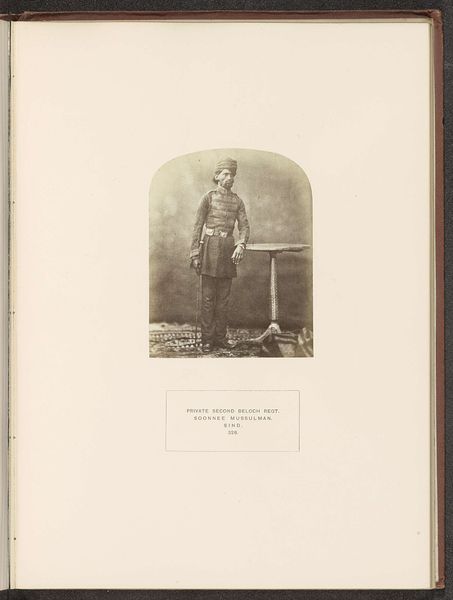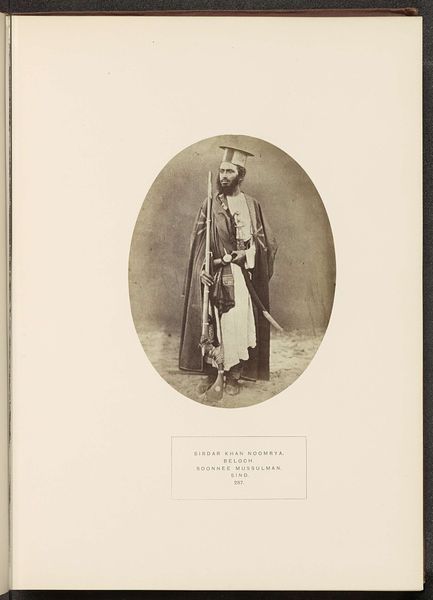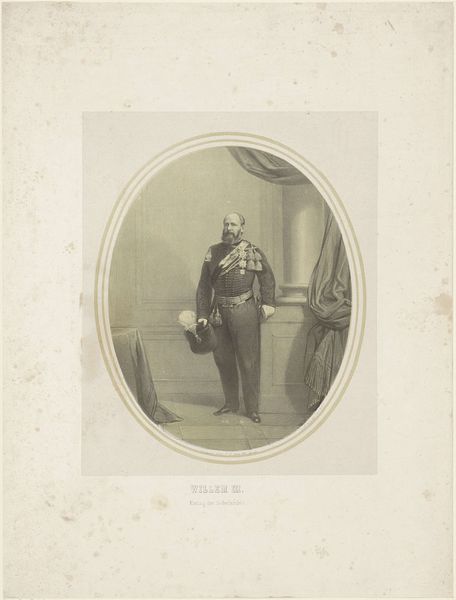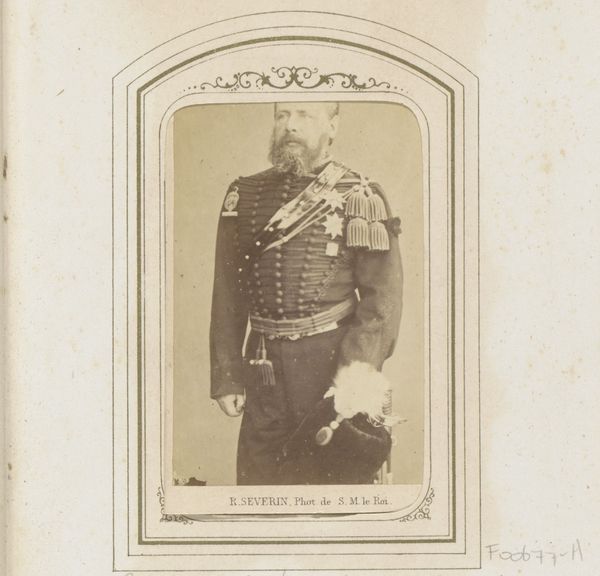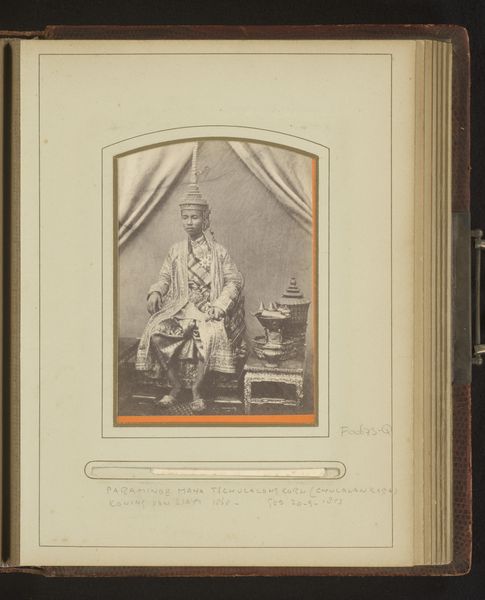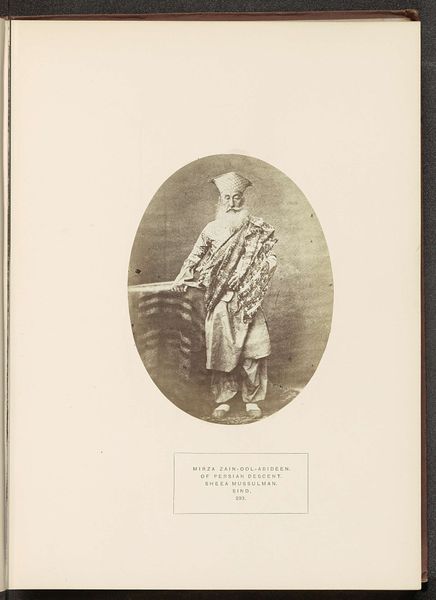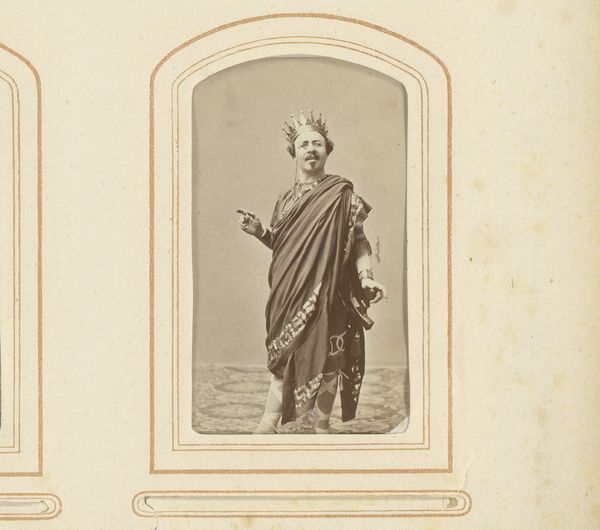
photography, albumen-print
#
portrait
#
photography
#
coloured pencil
#
orientalism
#
albumen-print
Dimensions: height 87 mm, width 173 mm
Copyright: Rijks Museum: Open Domain
Editor: This albumen print, "Koopman te Sousse, Tunesië," which translates to Merchant in Sousse, Tunisia, dating between 1879 and 1910 by F & E, presents a stereo image of a man, likely a merchant, standing in front of a striped wall. I'm struck by how the sepia tones evoke a sense of the past, a bygone era captured in a static frame. How do you interpret this work, considering its historical context? Curator: This photograph, while seemingly a straightforward portrait, is steeped in the visual language of Orientalism. It presents a particular view of the ‘Orient,’ carefully constructed for a European audience. The subject, identified as a merchant, is deliberately framed against a backdrop that exoticizes him. Who profits, literally and figuratively, from this framing? Consider how photography at the time served as a tool of documentation but also of constructing narratives that often reinforced power dynamics. Editor: So, it’s not just a simple snapshot. The way the merchant is presented tells a story of cultural power? Curator: Exactly. Think about the photographers, F & E, based in Paris and Beirut, and the intended viewers in Europe. What expectations do they bring to an image like this? How does the image cater to and solidify those expectations? The very act of photographing, of capturing and categorizing, becomes a form of control. The ‘colored pencil’ tag seems interesting; it’d be worthwhile to explore that coloring decision, too. What ideological assumptions might be embedded within that artistic choice? Editor: It's interesting to consider it less as a truthful depiction and more as a curated representation designed to reinforce certain colonial-era perceptions. I hadn't considered the photograph's role in perpetuating those power structures so directly. Curator: And recognizing that shifts our understanding entirely. The photograph becomes less a window and more a mirror reflecting the biases of its creators and intended audience, compelling us to examine our own positionality as viewers today. Editor: This makes me consider historical context so much more deeply. Thank you for illuminating those aspects!
Comments
No comments
Be the first to comment and join the conversation on the ultimate creative platform.
